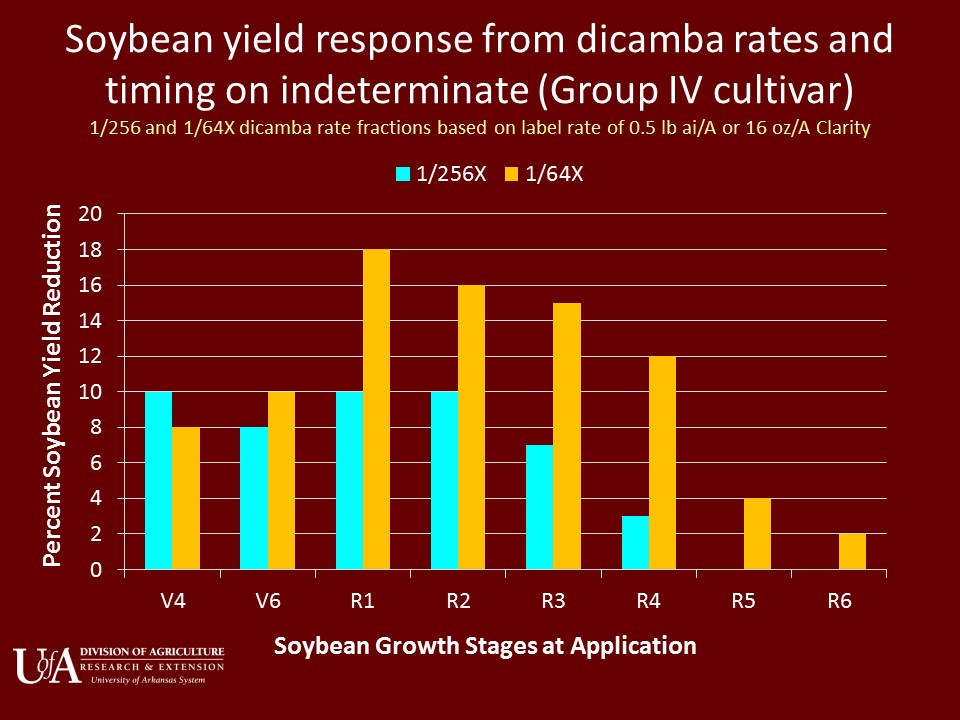Dicamba drift calls had died down for a short spell but really blew back up in the last few days (7/28 to 8/3). Clearly a good bit of late planted Xtend soybeans were sprayed with a dicamba product about 14 days ago.
Calls have ranged from soybean fields drifted on for the first time to numerous soybean fields drifted on for the second and in a few cases likely a third time. Other crops like tobacco, as well as gardens and trees have also been reported with dicamba drift damage. This is disappointing as these late dicamba drift calls suggest that the new Tennessee rules that went into effect July 12, at best only had a modest effect on curtailing dicamba drift.
It is not only disappointing but alarming to the farmers who have been drifted on this late in the growing season. Research from Dr. Tom Barber at the University of Arkansas (Figure 1) as well as last years’ experience strongly suggests that soybeans exposed to dicamba while in the R1 to R2 growth stages and/or multiple times have a much higher probability of suffering significant yield loss.
The main new rule that I hoped would help in mitigating drift was the one that specified that Engenia or Xtendimax could only be sprayed between 9:00 AM and 4:00 PM. This rule was designed to remind folks to avoid spraying into a temperature inversion which occurs most evenings this time of year and dissipates in the morning. Inversions are believed to be a main reason that dicamba moved such great distances. Provided most folks followed the new rule, this new series of drift issues would suggest that volatility is the most likely reason for the large scale movement of dicamba.
I have had several meetings with my Extension Weed Science colleagues last week and it is clear that dicamba drift is widespread and is not occurring solely in the Midsouth. Our collective estimate is that 2.5 million acres (Bradley et al.) of just soybeans have been effected ranging from Minnesota to Mississippi and Kansas to Ohio. That was a very conservative estimate and several of my colleagues said they would need to raise their estimates if asked this week as dicamba drift calls continue in their states.
As we have seen in Tennessee, the weed scientists in other states all reported that the cause of dicamba trespassing across the country side is due to a sundry of reasons. However, based on research at some universities and field observations in every state, where large soybean fields show uniform dicamba drift injury from one side of the field to the other and from end row to end row, my weed science colleagues are becoming convinced that dicamba’s volatility is a major factor. What I have seen in the field the past two years, and just again this past week, supports this conclusion. That we weed scientists agree is notable as that seldom occurs.
There are two things about this technology that are very clear across all the states. First, Xtendimax and Engenia are good tools for pigweed control. Second is that most applicators struggle to keep them in the target field.
Literature cited: Bradley et al. 2017 https://ipm.missouri.edu/IPCM/2017/7/Ag_Industry_Do_we_have_a_problem_yet/
Figure 1. Barber et al.


